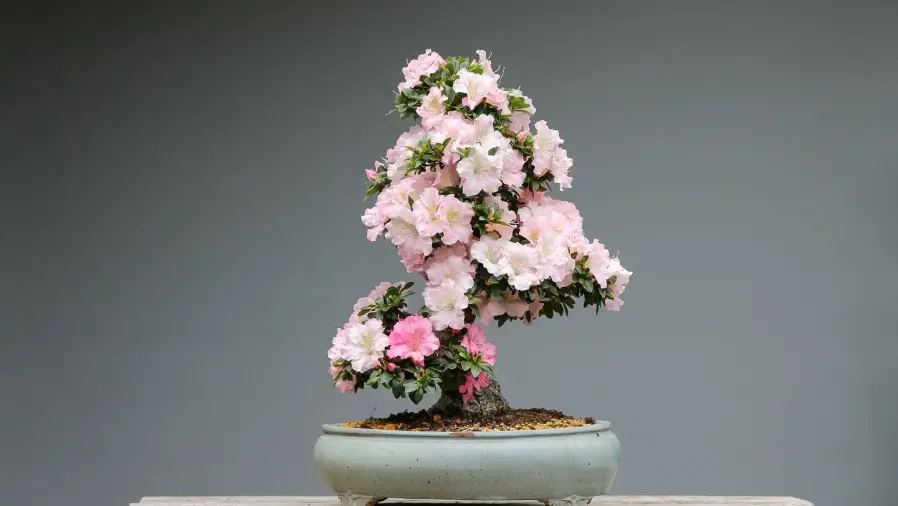Bonsai, a venerable art with roots tracing back over a millennium to ancient China, continues to captivate the imagination with its extraordinary ability to metamorphose ordinary trees into living masterpieces. This intricate craft, blending artistic flair with horticultural finesse, transforms each bonsai tree into a miniature marvel. In this comprehensive article, we will delve into the realm of bonsai styling and provide invaluable guidance, particularly designed for both budding enthusiasts and beginners.

Deciphering the Artistry of Bonsai
Bonsai, translating to “tray planting,” transcends the realm of mere gardening; it embodies a fusion of artistry, unwavering patience, and profound horticultural knowledge. This art form revolves around nurturing and sculpting trees to emulate their full-sized counterparts while preserving their diminutive stature.
Handpicking the Perfect Bonsai Tree
Embarking on the journey of bonsai styling begins with a critical decision – selecting the ideal tree species. Different species exhibit distinct growth patterns and requirements. For those venturing into the world of bonsai for the first time, some excellent choices include junipers, ficuses, and Chinese elms. Thorough research of your chosen species is paramount to success.
Bonsai Styling: Essential Tools for Bonsai Mastery
To craft a bonsai masterpiece, an arsenal of specialized tools is indispensable. This toolkit encompasses concave cutters, branch cutters, wire cutters, and bonsai shears. Each instrument plays a pivotal role in molding and preserving your bonsai’s exquisite form.
The Art of Pruning
At the core of bonsai styling lies the art of pruning. Regularly trimming and shaping your tree’s branches and foliage not only preserves its size but also stimulates fresh growth in desired directions. Pruning is the keystone to enhancing the overall aesthetic allure of your bonsai.
Mastering the Techniques of Wiring and Training
Wiring stands as a fundamental technique in guiding your bonsai’s branches into their desired configuration. This method involves delicately wrapping wire around branches, manipulating them to achieve the desired silhouette. Patience is the essence here, as perfecting the shape may take months or even years.
Soil and Pot Selection: The Foundation of Success
The choice of soil mix and pot for your bonsai is pivotal to its vitality and development. Bonsai trees exhibit unique soil requirements distinct from conventional garden soil. A well-draining, coarse bonsai soil mix is imperative to prevent waterlogged roots.
Nurturing Through Watering and Fertilizing
A judicious approach to watering and fertilization is critical in maintaining your bonsai’s health. Overwatering can precipitate root rot, while under-watering may stress the tree. Regular fertilization during the growing season ensures your bonsai receives the essential nutrients it needs to thrive.
Safeguarding Your Bonsai’s Well-being
Bonsai trees, like any other plants, are susceptible to pests and diseases. Regular inspections are paramount to detect signs of infestations or ailments promptly. Proactive care is pivotal in preserving your bonsai’s health and vibrancy.
Cultivating the Virtue of Patience
Bonsai styling unfolds as a slow, contemplative process, demanding patience, commitment, and an eagerness to learn from both triumphs and setbacks. Embrace the journey of observing your bonsai’s gradual evolution over time; hastening the process is seldom fruitful.
Conclusion
Within the world of bonsai, styling is an exquisite fusion of art and science. By adhering to these expert tips and techniques, you embark on your very own bonsai odyssey, crafting miniature masterpieces that reflect your imagination and dedication. Always remember, bonsai is not merely the cultivation of trees; it is the nurturing of a living masterpiece, capturing the essence of nature in a captivating, diminutive form.

FAQs
How frequently should I water my bonsai tree?
The frequency of watering varies, contingent upon factors such as the tree species, season, and climate. Generally, water your bonsai when the topsoil feels slightly dry to the touch.
Can any tree be styled as a bonsai?
While numerous tree species can be crafted into bonsai, some exhibit greater suitability due to their growth patterns and adaptability. Extensive research aids in selecting a species aligning with your skill level and climate.
When is the optimal time for repotting a bonsai tree?
The prime period for repotting your bonsai falls in early spring, just before the onset of new growth. This timing enables the tree to recover and establish itself in its new pot.
Do bonsai trees necessitate specific indoor conditions?
Bonsai trees primarily thrive outdoors, requiring natural sunlight and seasonal temperature fluctuations. However, with meticulous care and ample light, certain species can thrive indoors.
How long does it take to create a finely styled bonsai tree?
Bonsai styling exemplifies a virtue of patience; the duration required varies significantly. Achieving the desired aesthetic can span several years or even decades, contingent upon the species and your skill level.
